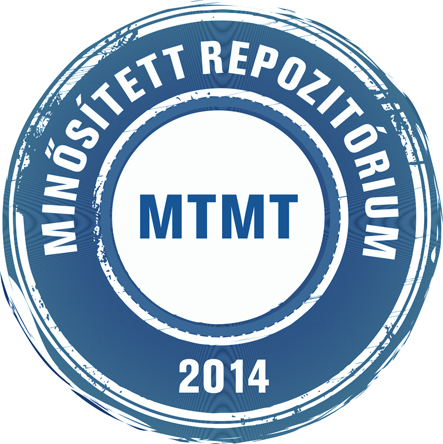Grassi, Giacomo és Conchedda, Giulia és Federici, Sandro és Abad Viñas, Raul és Korosuo, Anu és Somogyi, Zoltán (2022) Carbon fluxes from land 2000–2020: bringing clarity to countries' reporting. EARTH SYSTEM SCIENCE DATA, 14 (10). pp. 4643-4666. ISSN 1866-3508
|
Szöveg
essd-14-4643-2022.pdf Download (1MB) |
Absztrakt (kivonat)
Abstract. Despite an increasing attention on the role of land in meeting countries'climate pledges under the Paris Agreement, the range of estimates of carbonfluxes from land use, land-use change, and forestry (LULUCF) in availabledatabases is very large. A good understanding of the LULUCF data reported bycountries under the United Nations Framework Convention on Climate Change(UNFCCC) – and of the differences with other datasets based on country-reported data – is crucial to increase confidence in land-based climatechange mitigation efforts. Here we present a new data compilation of LULUCF fluxes of carbon dioxide(CO2) on managed land, aiming at providing a consolidated view on thesubject. Our database builds on a detailed analysis of data from nationalgreenhouse gas inventories (NGHGIs) communicated via a range of countryreports to the UNFCCC, which report anthropogenic emissions and removalsbased on the IPCC (Intergovernmental Panel on Climate Change) methodology.Specifically, for Annex I countries, data are sourced from annual GHGinventories. For non-Annex I countries, we compiled the most recent andcomplete information from different sources, including nationalcommunications, biennial update reports, submissions to the REDD+(reducing emissions from deforestation and forest degradation) framework, andnationally determined contributions. The data are disaggregated into fluxesfrom forest land, deforestation, organic soils, and other sources (includingnon-forest land uses). The CO2 flux database is complemented byinformation on managed and unmanaged forest area as available in NGHGIs. Toensure completeness of time series, we filled the gaps without altering thelevels and trends of the country reported data. Expert judgement was appliedin a few cases when data inconsistencies existed. Results indicate a mean net global sink of −1.6 Gt CO2 yr−1 over theperiod 2000–2020, largely determined by a sink on forest land (−6.4 Gt CO2 yr−1), followed by source from deforestation (+4.4 Gt CO2 yr−1),with smaller fluxes from organic soils (+0.9 Gt CO2 yr−1) and otherland uses (−0.6 Gt CO2 yr−1). Furthermore, we compare our NGHGI database with two other sets ofcountry-based data: those included in the UNFCCC GHG data interface, andthose based on forest resources data reported by countries to the Food and Agriculture Organization of the United Nations (FAO) and usedas inputs into estimates of GHG emissions in FAOSTAT. The first dataset,once gap filled as in our study, results in a net global LULUCF sink of −5.4 Gt CO2 yr−1. The difference with the NGHGI database is in this casemostly explained by more updated and comprehensive data in our compilationfor non-Annex I countries. The FAOSTAT GHG dataset instead estimates a netglobal LULUCF source of +1.1 Gt CO2 yr−1. In this case, most of thedifference to our results is due to a much greater forest sink for non-AnnexI countries in the NGHGI database than in FAOSTAT. The difference betweenthese datasets can be mostly explained by a more complete coverage in theNGHGI database, including for non-biomass carbon pools and non-forest landuses, and by different underlying data on forest land. The latter reflectsthe different scopes of the country reporting to FAO, which focuses on areaand biomass, and to UNFCCC, which explicitly focuses on carbon fluxes.Bearing in mind the respective strengths and weaknesses, both our NGHGIdatabase and FAO offer a fundamental, yet incomplete, source of informationon carbon-related variables for the scientific and policy communities,including under the Global stocktake. Overall, while the quality and quantity of the LULUCF data submitted bycountries to the UNFCCC significantly improved in recent years, importantgaps still remain. Most developing countries still do not explicitlyseparate managed vs. unmanaged forest land, a few report implausibly highforest sinks, and several report incomplete estimates. With these limits inmind, the NGHGI database presented here represents the most up-to-date andcomplete compilation of LULUCF data based on country submissions to UNFCCC. Data from this study are openly available via the Zenodo portal (Grassi etal., 2022), at https://doi.org/10.5281/zenodo.7190601.
Tudományterület / tudományág
természettudományok > környezettudományok
Kar
Nem releváns
Intézmény
Soproni Egyetem
| Mű tipusa: | Cikk |
|---|---|
| SWORD Depositor: | Teszt Sword |
| Felhasználó: | Csaba Horváth |
| A mű MTMT azonosítója: | MTMT:33170042 |
| Dátum: | 04 Nov 2022 12:42 |
| Utolsó módosítás: | 04 Nov 2022 12:42 |
| URI: | http://publicatio.uni-sopron.hu/id/eprint/2530 |
Actions (login required)
 |
Tétel nézet |


 Repozitóriumi letöltési statisztika
Repozitóriumi letöltési statisztika Repozitóriumi letöltési statisztika
Repozitóriumi letöltési statisztika
